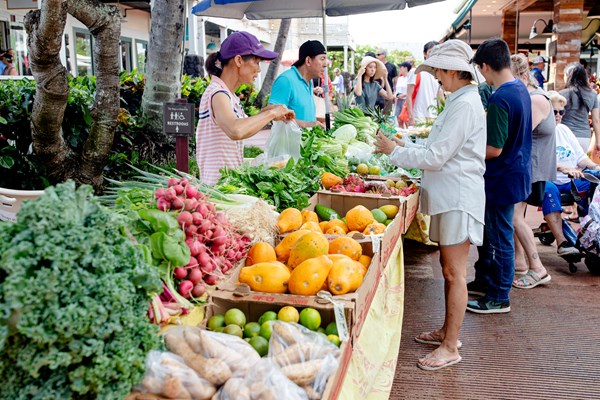Hawai‘i Island Food Access Survey preliminary data reveals ongoing food access challenges
Oct 27, 2025

Two-thirds of Hawai‘i Island residents struggle to access adequate food, with nearly one in four reporting they sometimes or often don’t have enough to eat, according to a preliminary data from a recent survey released by The Food Basket, Hawai‘i Island’s Food Bank.
The 2025 Food Access Survey was conducted earlier this year in collaboration with the County of Hawai‘i as part of the ongoing Community Food Security Project. The survey helps identify challenges faced by residents in accessing healthy, affordable food and supports efforts to strengthen local food systems.
More than 500 residents took the survey, which was a key component of an effort to increase food security on Hawai’i Island and inform the development of the Five-Year County of Hawai’i Community Food Security Plan. This project was funded through the Coronavirus State and Local Fiscal Recovery Funds provided by the U.S. Department of the Treasury under the American Rescue Plan Act (ARPA) of 2021. The grant funds are specifically designated to address the negative economic and public health impacts caused by the COVID-19 pandemic, with a focus on enhancing food security among affected communities on Hawaiʻi Island.
The United States Department of Agriculture defines food insecurity as a lack of consistent access to enough food for every person in a household to live an active, healthy life. There are different levels of food security, ranging from high food security to very low food security. Preliminary data shows:
High Food Security (No reported indications of food-access problems or limitations. Consistent access to enough nutritious food)
- Responding to the survey statement “I am able to access the foods that I want to eat,” 33% reported high food security.
Low Food Security (Reduced quality, variety, or desirability of diet, but little or no indication of reduced food intake)
- Responding to the survey statement “I am able to access enough food, but not the food that I want to eat,” 43% reported low food security.
Very Low Food Security (Disrupted eating patterns and reduced food intake)
- Responding to the survey statement “I sometimes or often can’t access enough food,” 24% reported very low food security.
Of all survey respondents, 41% reported spending more than half of their income on housing and utilities. Among the group that reported “often” not having access to enough food, 60% spent more than half their income on housing and utilities.
Having a better understanding of food insecurity in the community helps to identify the scope, the causes and solutions to this critical and important social issue. The research reveals the public’s need so that programs and policies can be improved and future funding prioritized.
The full survey results will be available later this year.

